ON THIS PAGE
Lures and baits for your traps
- Raw mutton fat is a great lure for traps. Mutton fat can be hard to find (asking your local butcher is your best bet) so raw beef fat is another option, but not pork fat. Freeze raw fat to prolong its lifespan. Rub the raw mutton fat on the mesh of your trap tunnels and add some inside your trap. You can also lead a ‘Hansel and Gretel’ trail of fat leading to your trap.
- Don’t use cooked or rendered fat like dripping. Raw fat doesn’t go manky in warm weather and wasps aren’t attracted to it, so in areas where there are lots of wasps this type of bait lasts longer.
- Egg-based mayonnaise attracts possums, rats and stoats, and feral cats too.
- Cinnamon is a good lure for possums because it smells like kawakawa. Cinnamon-scented flour works well. We’ve got an effective recipe for possum sweet flour paste you can use.
- Use oils that duplicate the lures in other devices e.g. if there is cinnamon-based toxic bait, or you are using ‘smooth blue’ lure on your kill traps, use cinnamon oil in your flour.
- Stoat and ferret odour or bedding can be quite attractive to other mustelids, but it is hard to come by.
- A lone mouse on Maungatautari was captured using the litter from the mouse cage at the local pet shop as an attractant.
- The Otanewainuku Kiwi Trust has a recipe for salted rabbit (PDF, 191KB).
Create a possum nightclub
A possum nightclub might sound like a conservation nightmare, but it’s a great way to give your birdlife a helping hand. Possums breed in March and April and again in September and October. During this time, they’re really promiscuous and are out socialising and moving around a lot.
If you have a low number of possums in your bush block, creating a nightclub makes your area party central, attracting possums from far and wide. Once you’ve got them coming every night, you can then set traps to clear your area of possums.
Possum nightclubs are great if you’re trying to control a large area with a low population. Because they’re so social during mating season, they’ll follow each other to the site. Trapping during the breeding season stops the possum population from booming so the birds can thrive.
Wildlife biologist Cam Speedy is an expert possum party planner. In this handy video, he gives step by step instructions for creating a successful possum nightclub.
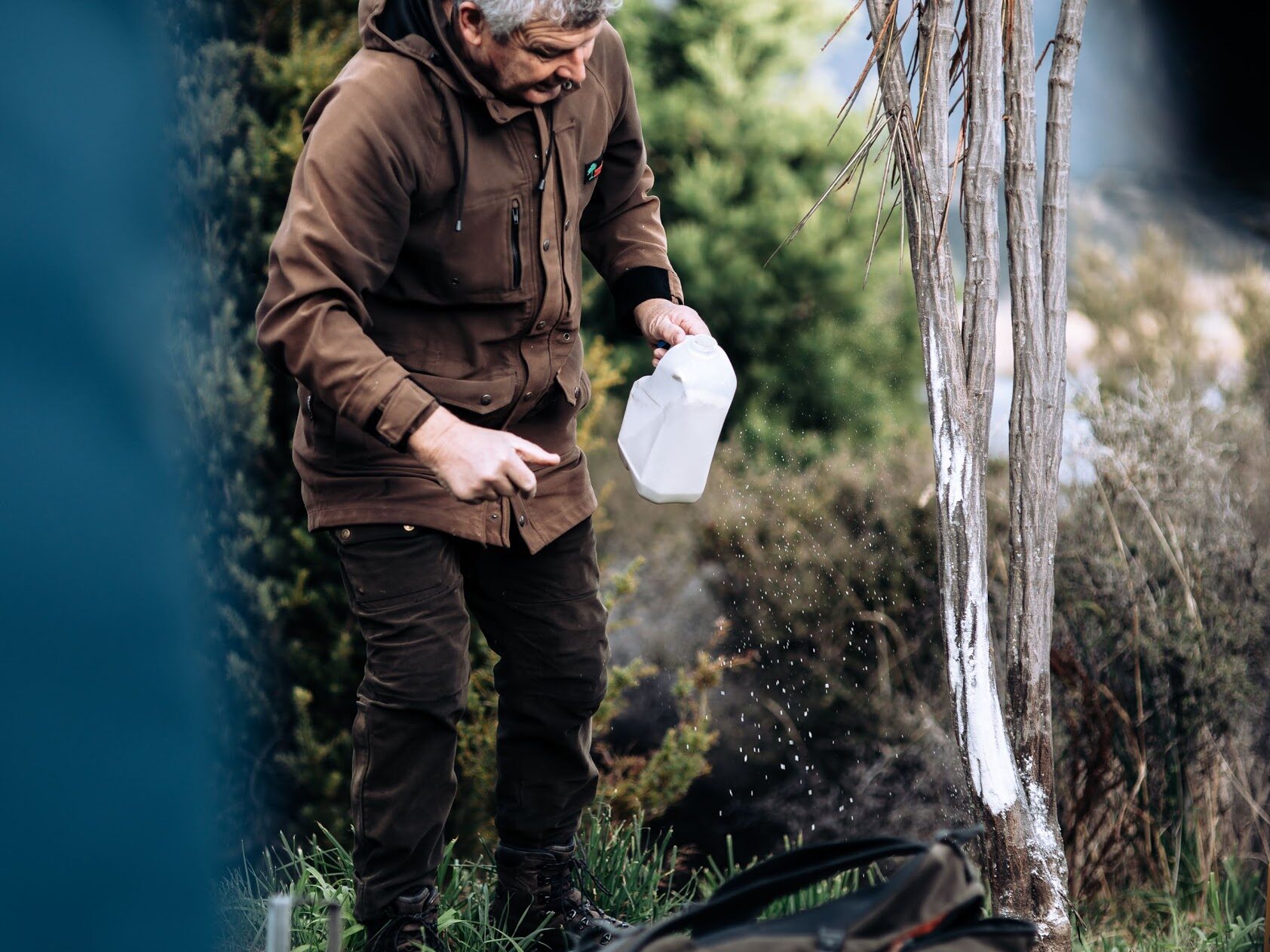
How to create a possum nightclub
- Choose an area to host the nightclub.
- Unset your traps and remove bait from your bait stations.
- Fill your bait stations with a couple of kilograms of tasty treats:
- Cut carrot is great because it’s rainproof
- Use horse cereal if the weather’s dry
- Try other local, seasonal, and cheap produce
- Blaze the trail leading in with this sweet scented flour recipe
- Put out fresh food every night for seven to ten days – a week is long enough if you have lots of possums in your area, while ten days is better if you have low numbers.
- Check to see if it’s working – the food will be disappearing and there will be worn down runs into the site.
- When you know your nightclub is popular, set three to six traps or bait stations for a few nights in a row – the Flipping Timmy is a great trap for this. Or, if you’re an experienced pest controller, Victor leg hold traps can work well.
- Enjoy watching the bush bounce back and hear the birdlife humming!
Boost your bait station

We asked predator control specialist Cam Speedy what makes a successful bait station.
Bait stations are a great tool to add to your predator control kit.
Tucked away out of the weather (and at least 5m from public tracks), bait stations keep bait fresh and attractive for introduced predators.
You can also use them for pre-feeding if you’re setting up a possum nightclub.
Cam’s top tips for bait stations:
- Keep it low – place it about one hammer length up the trunk of the tree
- Put it on the sheltered side of the tree so it’s out of the weather
- Attach it with a tech-screw rather than a nail (this protects the tab)
- Scuff the ground around it to create interest
- Blaze the trail leading in with flour mixed with icing sugar and cinnamon
- Keep your station free from mould and dirt – a clean, white station is more appealing for possums
Be careful!
Always wear protective gloves when handling baits and dispose of old baits responsibly.
Toxic baits must be kept away from children, pets, and curious native species like weka. If your area is near a popular walking track or has a lot of ground-dwelling native species, it might not be suitable for a bait station.
Double trouble: Victor double-set trap
To get the most out of your Victor double-set, it’s all about sales and marketing.
Based on the success that double-set DOC 200s have, the Victor double-set trap is specially designed to house two Victor professional rat traps.
Tunnels like these are a critical part of the trapping toolkit – keeping traps away from native species while still luring rats in.
With two entrances facing opposite directions and a trap inside each, the Victor double-set is double trouble for introduced predators.
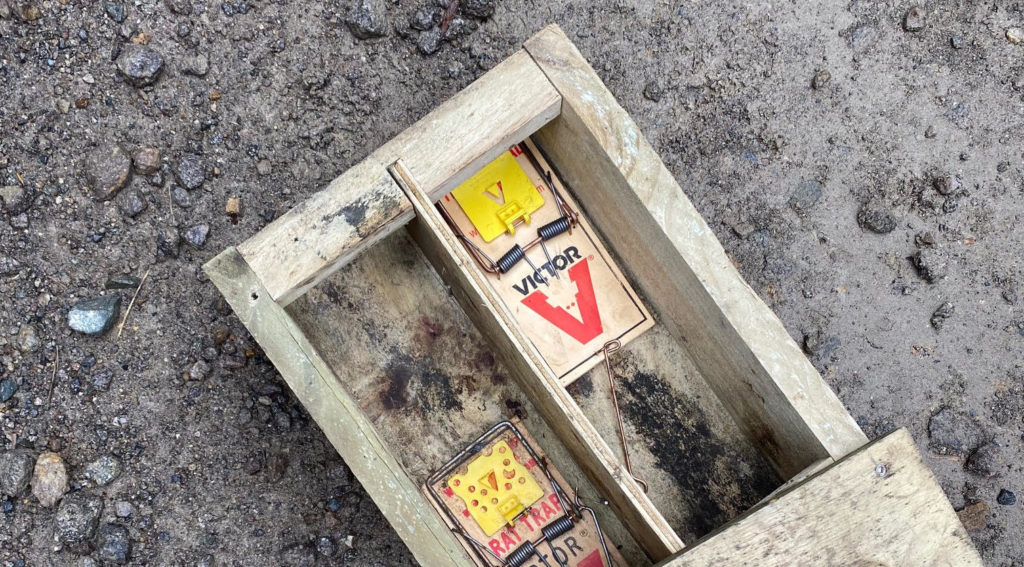
Cam’s top tips for the Victor double-set trap:
- Make sure the box is firmly in place and doesn’t wobble
- Set your traps:
- Bait the plate with peanut butter (or another lure)
- Hold them with the “business-end” away from you
- Set the trap on the fine mode
- Carefully place the loaded trap in the box and push it away from the entrance with a stick
- Close the box and screw the lid down
- Scuff the ground, blaze with scented flour, and pop some peanut butter on the doorstep to make it appetising
- Find out how Predator Free Ngaio trapped 10,000 rats and mice with clever trap placement
Get the most out of your DOC 200 trap
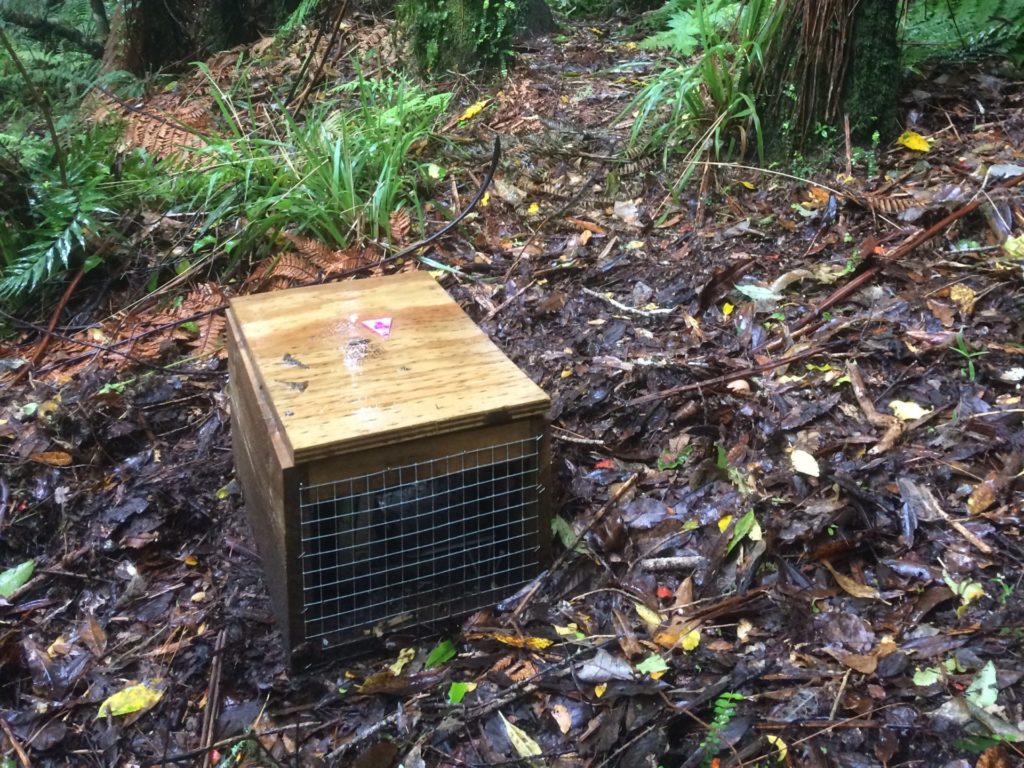
Predator control specialist Cam Speedy knows a thing or two about trapping after 40 years in the business. And like Cam, the DOC 200 has stood the test of time.
Over the last couple decades, DOC 200s have been put to the test up and down the country in harsh, rugged conditions.
When it comes to controlling mustelids like stoats, they are still one of the best traps out there.
But is your DOC 200 just not performing? We asked Cam how to take a DOC 200 trap to the next level.
Cam’s top tips for the DOC 200:
- Always set off the trap before you work with it
- Use an old pair of socks to dry-fire the trap and protect it from wear and tear
- Place eggs on the side rather than standing up as a natural visual cue
- Blow eggs and use the whites and yolks as lures on the ground around the trap, placing the shell inside
- Scuff a trail leading into the trap
- Use logs, ferns or similar to create a line to direct animals to the entrance of the trap
- Blaze some trees nearby to lure possums and rats using a mix of flour, icing sugar, and an appealing smell like cinnamon, vanilla, or eucalyptus
- Leave Hansel and Gretel-esque trails with raw mutton fat leading to the trap
- Leave a few tasty treats, such as crumbs of mutton fat or dollops of peanut butter, outside your trap entrance as this will entice predators to investigate further
- Place bait up high in the trap to help scent flow through on the breeze
- Leave any freshly caught rodent in the box as an additional lure
Highways, not byways: increase traffic to your traps
Why do some traps not get much traffic while it’s rush hour at others? We put the question to predator control specialist Cam Speedy to learn why trap placement is so important.
It turns out introduced predators prefer a nice trail walk to a rugged bush bash just like we do. Because we rarely see them, it’s easy to think rats, stoats, and possums like to scurry around out of sight in tangly bush and undergrowth.
So, it can be tempting to pop your trap box or trapping tunnel tucked under a bush and down a bank, off the main walking tracks. But to get the most out of your trap, think “highways, not byways”.
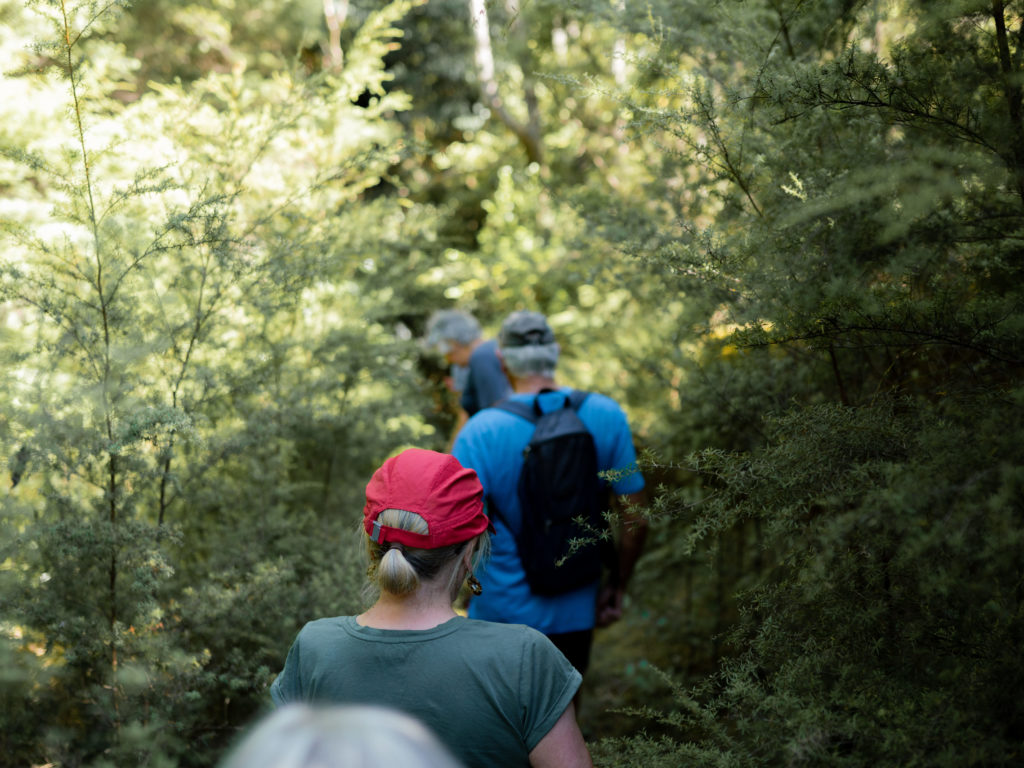
Cam’s top tips for placing traps:
- Place the trap parallel to the “highway” – track, river, ridge, road, or hedgerow
- Keep it level and really bed the trap down well – rats and stoats don’t like standing on wobbly things
- Scuff the ground leading up to the trap to make it interesting and appealing
- Blaze the trail leading in with a mix of flour, icing sugar, and cinnamon
Now that you’ve made it easy for predators to find and enter your trap, you’ll need to check it often to reset and rebait it.
Two easy ways to improve your bait stations
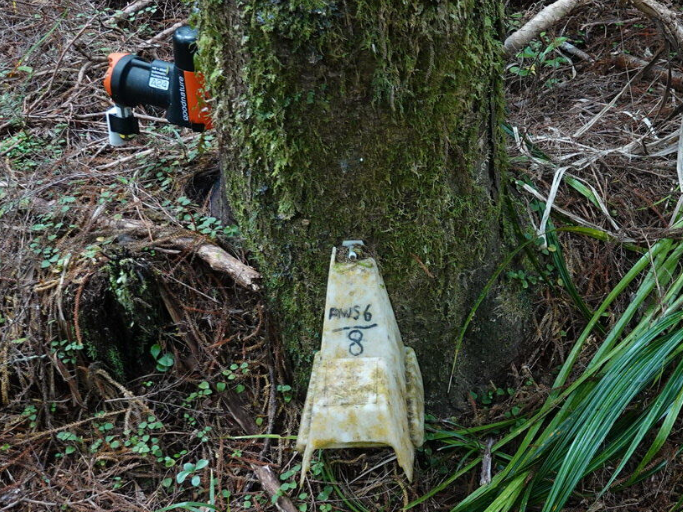
Tamper-proof bait stations are easy to use and are a great addition to your backyard trapping toolkit. They’ll help you keep introduced predators under control and limit the amount of toxin that gets out into the environment.
If you’re keen to set one up but don’t know where to start, or want to make your bait station more popular, predator control specialist Cam Speedy is here to help!
We asked him how to turn a bait station from a lonely, untouched box on the forest floor into party-central for predators like rats and stoats.
Cam’s two simple tips:
- Scuff the ground around the entrance – this makes it more interesting for rats and stoats and easier for them to access
- Put a blaze of scented flour around the station – mix it with icing sugar and cinnamon to make it more appealing
A recipe for dehydrated rabbit
Dave of Whangamatā shared his recipe for dehydrated rabbit. This dehydrated rabbit is easy to carry around, lasts for ages and doesn’t go as manky as other baits.
- Take a gutted, skinned and headless rabbit. Cleaver it into bite size pieces, bones and all.
- Make a salt brine (40 grams of salt per litre of water). Soak rabbit pieces in salt brine for three days in the fridge.
- Drain and squeeze out the moisture from the pieces.
- Place the rabbit pieces in a dehydrator and leave at 60 degrees until dried (it will take about 12 hours). The pieces could also be dried in an oven at 60 degrees.
For more information on what you can do to take your trapping to the next level, you can download a Predator Control Annual Calendar (PDF, 102KB) or buy an A2 print from our shop.

